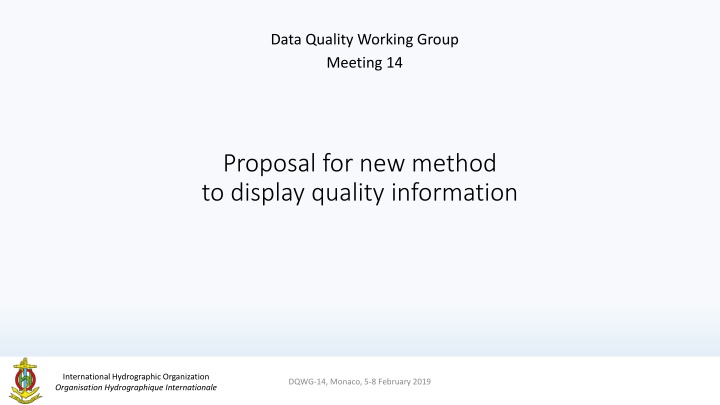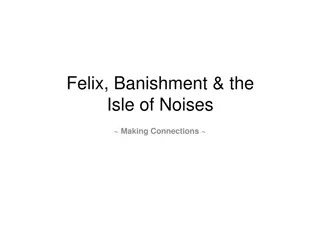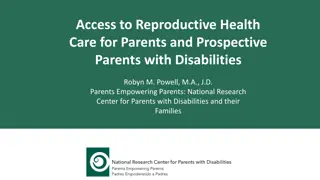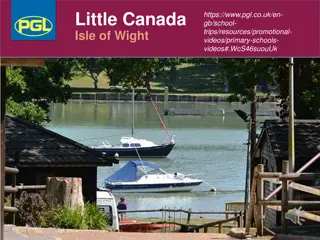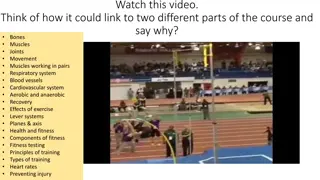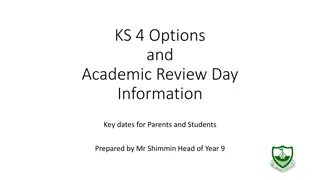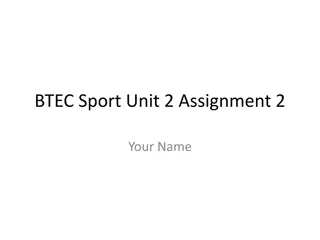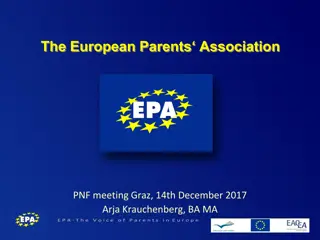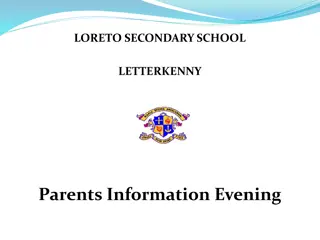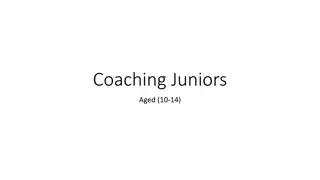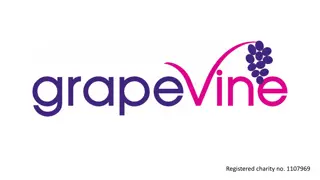Isle of Man Badminton Association Parents Information Evening
Official information evening presented by Yvonne Hewlett and Matthew Wilkinson for parents interested in Isle of Man Badminton Association. Topics covered include clubs, junior tournaments, squads, off-island trips, fees, IOM Sport & Sport Aid, and parent involvement. Meet the association's key members and find out how to get involved.
Download Presentation

Please find below an Image/Link to download the presentation.
The content on the website is provided AS IS for your information and personal use only. It may not be sold, licensed, or shared on other websites without obtaining consent from the author.If you encounter any issues during the download, it is possible that the publisher has removed the file from their server.
You are allowed to download the files provided on this website for personal or commercial use, subject to the condition that they are used lawfully. All files are the property of their respective owners.
The content on the website is provided AS IS for your information and personal use only. It may not be sold, licensed, or shared on other websites without obtaining consent from the author.
E N D
Presentation Transcript
Data Quality Working Group Meeting 14 Proposal for new method to display quality information International Hydrographic Organization Organisation Hydrographique Internationale DQWG-14, Monaco, 5-8 February2019
End user requirements An indication should be given if the Mariner plans a route closer than a user-specified distance from a point object, such as a fixed or floating aid to navigation or isolated danger1 An indication should be given to the Mariner if, continuing on its present course and speed, over a specified time or distance set by the Mariner, own ship will pass closer than a user specified distance from a danger (for example obstruction, wreck, rock) that is shallower than the Mariner s safety contour or an aid to navigation2 Ref 1: IMO Performance Standard for ECDIS MSC.232 (82), clause 11.3.5 route planning Ref 2: IMO Performance Standard for ECDIS MSC.232 (82), clause 11..4.6 route monitoring International Hydrographic Organization Organisation Hydrographique Internationale DQWG-14, Monaco, 5-8 February2019
Development of CSP - restraints IHO HSSC has given a task to the Data Quality Working Group to develop a conditional visualization methodology of the quality of bathymetric data This new conditional symbology procedure (CSP) is constrained by: 1. Current ECDIS certificates by the Mariners remain valid; 2. Usable in day, dusk and night environment (all palettes); 3. May not create confusion with existing symbols and CSP s; 4. To be used to improve route planning; 5. To provide a clear indication of the allowable distance to obstructions, wrecks, and under water rocks. International Hydrographic Organization Organisation Hydrographique Internationale DQWG-14, Monaco, 5-8 February2019
UKC To safely navigate the vessel, the Mariner needs enough water under the keel (Under Keel Clearance) Depth contour lines assist in visualizing to meet this condition Depth contour lines are drawn as solid lines, indicating a solid boundary On one side of this boundary the water is deeper than the depth value of the contour line, on the other side the water is shallower But what happens if the position of the contour line is not exactly known? The symbol does not change! International Hydrographic Organization Organisation Hydrographique Internationale DQWG-14, Monaco, 5-8 February2019
Show depth contours with low accuracy A new Mariner setting in the ECDIS system: show depth contours with low accuracy New CSP will do the following: Step Loop entry point For each spatial component of this object, perform this loop 1 Get QUAPOS Is the value of the attribute 'QUAPOS' given? 2 'QUAPOS' != 1 && 10 && 11? Is QUAPOS not equal to surveyed , precisely known , calculated 3 If QUAPOS not given, get M_QUAL value Is Quality of Bathymetric Data value equal to 3, 4, 5 or Unassessed 4 LS(DASH,1,DEPCN) Symbolize the line with a dashed line, 1 unit wide, colour 'DEPCN' 5 LS(SOLD,1,DEPCN) Symbolize the line with a solid line, 1 unit wide, colour 'DEPCN' Note: QUAPOS is a descriptive quality indicator Note: step 1, 2, 4 and 5 are already used in S-57 and S-52. (CSP=DEPCNT03) International Hydrographic Organization Organisation Hydrographique Internationale DQWG-14, Monaco, 5-8 February2019
The result Default settings in an ECDIS system 10 m Normal depth contour of 10 meters Quality of Bathymetric Data = 1 or 2 or Oceanic (CATZOC = A1 or A2) Safety depth contour of 10 meters Mariner activates the setting: show depth contours with low accuracy 10 m Low accuracy depth contour of 10 meters Quality of Bathymetric Data = 3, 4, 5 or U (CATZOC = B, C, D or U) 10 m Low accuracy safety depth contour of 10 meters Note: areas deeper than 200m can be set to Oceanic by the Hydrographic Office, depth contours deeper than 200m are then always solid lines. International Hydrographic Organization Organisation Hydrographique Internationale DQWG-14, Monaco, 5-8 February2019
XTD To safely navigate the vessel, the Mariner needs sufficient horizontal distance from obstructions, wrecks and under water rocks (under water hazards) These items are of type Non-Bathymetric Data The attributes QUAPOS and POSACC qualify the location (optional) Quality of Bathymetric Data has a mandatory attribute: features detected Least depth (mandatory) and size of features detected (optional) Horizontal position uncertainty (mandatory) International Hydrographic Organization Organisation Hydrographique Internationale DQWG-14, Monaco, 5-8 February2019
Obstructions IHO definition: In marine navigation, anything that hinders or prevents movement, particularly anything that endangers or prevents passage of a vessel. The term is usually used to refer to an isolated danger to navigation, such as a sunken rock or pinnacle Do not have an attribute QUAPOS of POSACC All positions are then by default assumed to be precisely known A link should be created for those obstructions that require a QUAPOS or POSACC This link is needed in the CSP to be used for safe XTD International Hydrographic Organization Organisation Hydrographique Internationale DQWG-14, Monaco, 5-8 February2019
Wrecks IHO definition: The ruined remains of a stranded or sunken vessel which has been rendered useless quality of vertical measurement Water level effect Depth known Partly submerged at high water Least depth known Always dry Depth unknown, least depth unknown, doubtful sounding, unreliable sounding, value reported (not surveyed, not confirmed) Always under water/submerged Covers and uncovers Awash QUAPOS and/or POSACC are needed for the CSP International Hydrographic Organization Organisation Hydrographique Internationale DQWG-14, Monaco, 5-8 February2019
Rocks (intertidal/awash/submerged) IHO Definition: A concreted mass of stony material or coral which dries, is awash or is below the water surface quality of vertical measurement Water level effect Depth known Always under water/submerged Least depth known Covers and uncovers Depth unknown, least depth unknown, doubtful sounding, unreliable sounding, value reported (not surveyed, not confirmed) Awash QUAPOS and/or POSACC are needed for the CSP International Hydrographic Organization Organisation Hydrographique Internationale DQWG-14, Monaco, 5-8 February2019
Conditional Symbology Procedure for XTD A new Mariner setting in the ECDIS system: show safe distance from dangerous objects Step Loop entry point For each spatial component of this object, perform this loop 1 Get QUAPOS Is the value of the attribute 'QUAPOS' given? 2 'QUAPOS' != 1 && 10 && 11? Is QUAPOS not equal to surveyed , precisely known , calculated 3 If QUAPOS not given, get POSACC value Use POSACC value to calculate circle of uncertainty around the dangerous object 4 If POSACC not given, get M_QUAL value. Is Quality of Bathymetric Data value equal to 4, 5 or Unassessed? Set safety margin to 500 meters 5 Get value of Viewing scale Compute the 500 m safe distance in mm using viewing scale 6 SY(DANGER02) Draw the symbol 'DANGER02' at the calling object's location using 500m distance International Hydrographic Organization Organisation Hydrographique Internationale DQWG-14, Monaco, 5-8 February2019
The result Default settings in an ECDIS system Quality of Bathymetric Data value 1, 2, 3 or Oceanic (CATZOC = A1, A2 or B) Under water hazard with a defined depth 8 mm Mariner activates the setting: show safe distance from dangerous objects Safe distance = 500m (40 mm on screen @ 1:12.500) Quality of Bathymetric Data value 4, 5 or U (CATZOC = C, D or U) Chart Scale 1:12.500 Note: areas deeper than 200m can be set to Oceanic, no safe distance is needed for surface navigation. International Hydrographic Organization Organisation Hydrographique Internationale DQWG-14, Monaco, 5-8 February2019
Justification and impacts for UKC The look and feel of the ECDIS does not change The Mariner can select to show depth contours with low accuracy The depth contours will become dashed (take caution) Depth contour lines precisely known remain solid (safe boundary) The system is using already existing symbology procedures It will work in day and night environment International Hydrographic Organization Organisation Hydrographique Internationale DQWG-14, Monaco, 5-8 February2019
Justification and impacts for XTD The look and feel of the ECDIS does not change The Mariner can select to show safe distance from dangerous objects If the dangerous object s position is precisely known, it will be used If for a single dangerous object its location is uncertain, it will inherit the positional accuracy of the overlying area The system will show a safe distance of 500m in areas of CATZOC = C, D or Unassessed It will use already existing symbology to indicate a danger It will work in day and night environment International Hydrographic Organization Organisation Hydrographique Internationale DQWG-14, Monaco, 5-8 February2019
Justification and impacts for Hydrographic Office Already existing objects and attributes will be used When making the transition from S-57 to S-101 no additional effort is needed HO s can evaluate the need to start using optional attributes of QUAPOS and POSACC If no action is taken, the horizontal uncertainty of dangerous objects will be inherited from the overlaying Quality of Bathymetric Data object International Hydrographic Organization Organisation Hydrographique Internationale DQWG-14, Monaco, 5-8 February2019
Action required of Data Quality Working Group Note this presentation Discuss it at its next meeting Further develop the technical details of the Conditional Symbology Procedures Provide input papers to other Working Groups as deemed necessary International Hydrographic Organization Organisation Hydrographique Internationale DQWG-14, Monaco, 5-8 February2019
